Station IV: The Ice Edge

Our last station in our Ross Sea transect was out at the ice edge, about two miles north of our previous station, Station III. We were interested to see how plankton in the open polynya were different from the phytoplankton we isolated from areas locked in sea-ice. Polynyas are ice-free areas of open ocean and are highly productive, and the photosynthetic activity of diatoms and other phytoplankton of the polar regions are thought to be important components of the global carbon cycle.
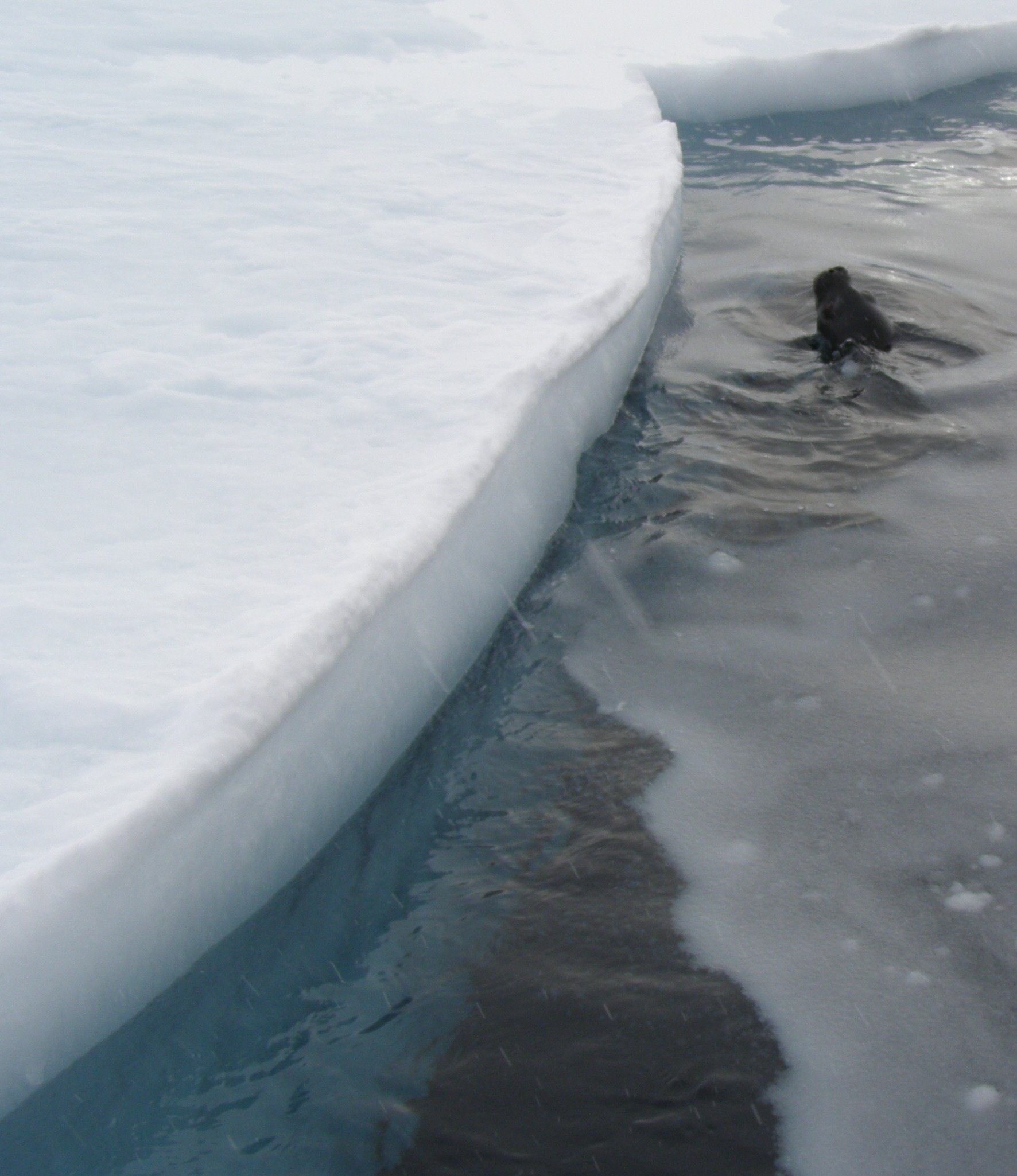
We left our heavy vehicles at Station III and took lighter snowmobiles out towards the open water. The Ross Sea polynya is one of the largest polynyas in Antarctica, and the sight of open water after weeks in Antarctica's frozen environment was totally thrilling. Distant pack ice dampened the incoming Southern Ocean swell, so there weren't large waves breaking over the ice, and in the distance we could see icebergs floating on the horizon. Near the waters edge, we stopped the snowmobiles short and set up a belay station. Using ropes, we belayed Brian out to the edge of the ice, where he drilled to test the thickness of the ice. The thickness was just over two meter, and if you peered over the edge, you could just make out the underside of the sea ice. We unpacked our sample gear and Jeff and I started to set up a filtration station.
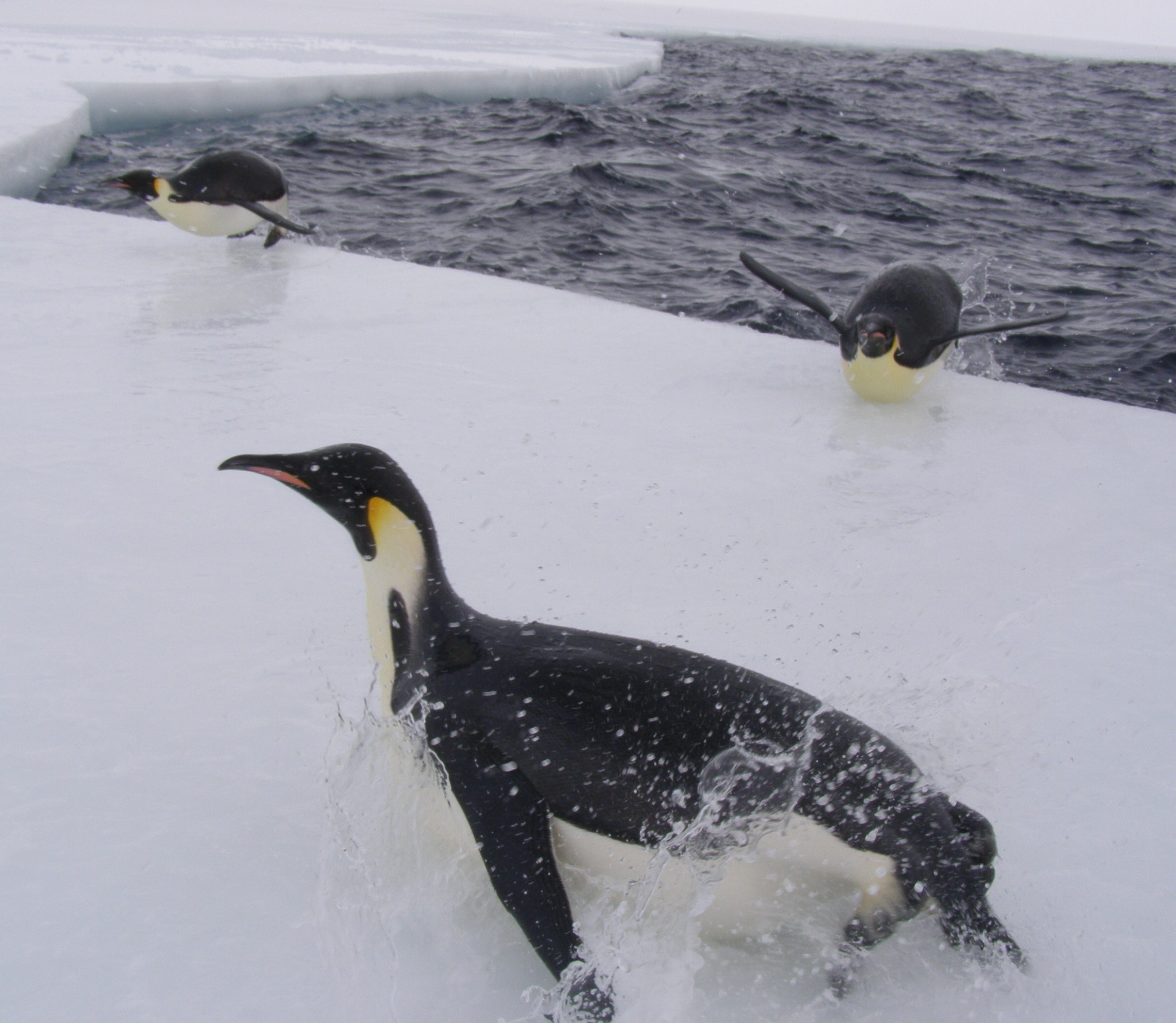
As we were connecting up our tubing and air compressor, we heard some noise from the ice edge, and suddenly dozens of emperor penguins began boiling up out of the water and landing directly onto the ice. They landed with big plops on their bellies, and quickly tobogganed away from the ice edge, splashing through the slush and creating a total rucus. It is doubtful an approaching penguin can see the top side of the ice - they pop onto the ice blind, so standing near the ice edge carried the non-negligible risk of getting knocked over by a 70 pound flying penguin!
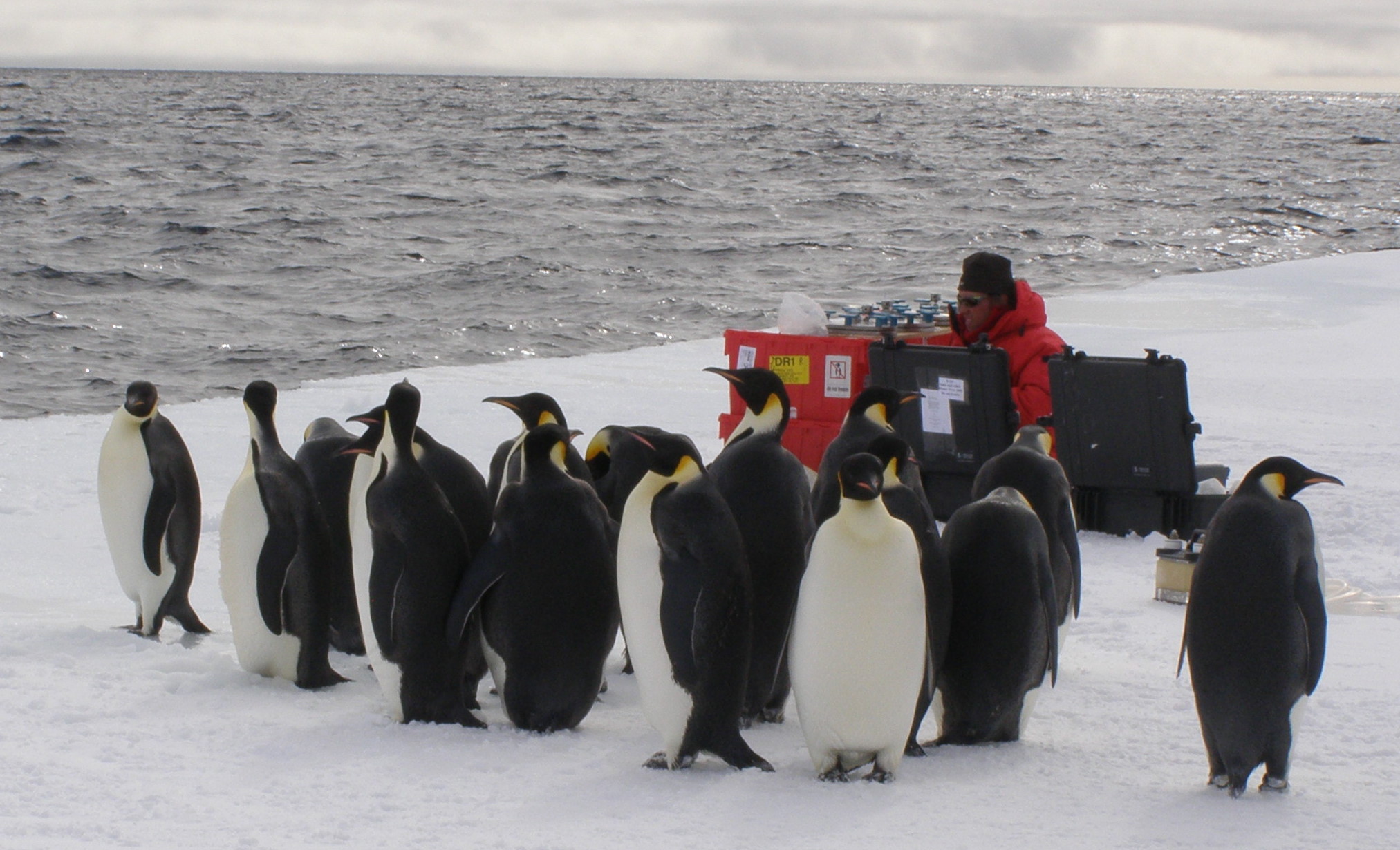
We set up our plankton filtration station, and as we worked our audience of flightless birds grew. Emperor penguins are extremely curious animals, and they fearlessly let us know that we were in their domain. At times they would waddle around our filters and pumps, silently looking over our set-up and seemingly unperturbed by our noisy gasoline-powered air compressor.
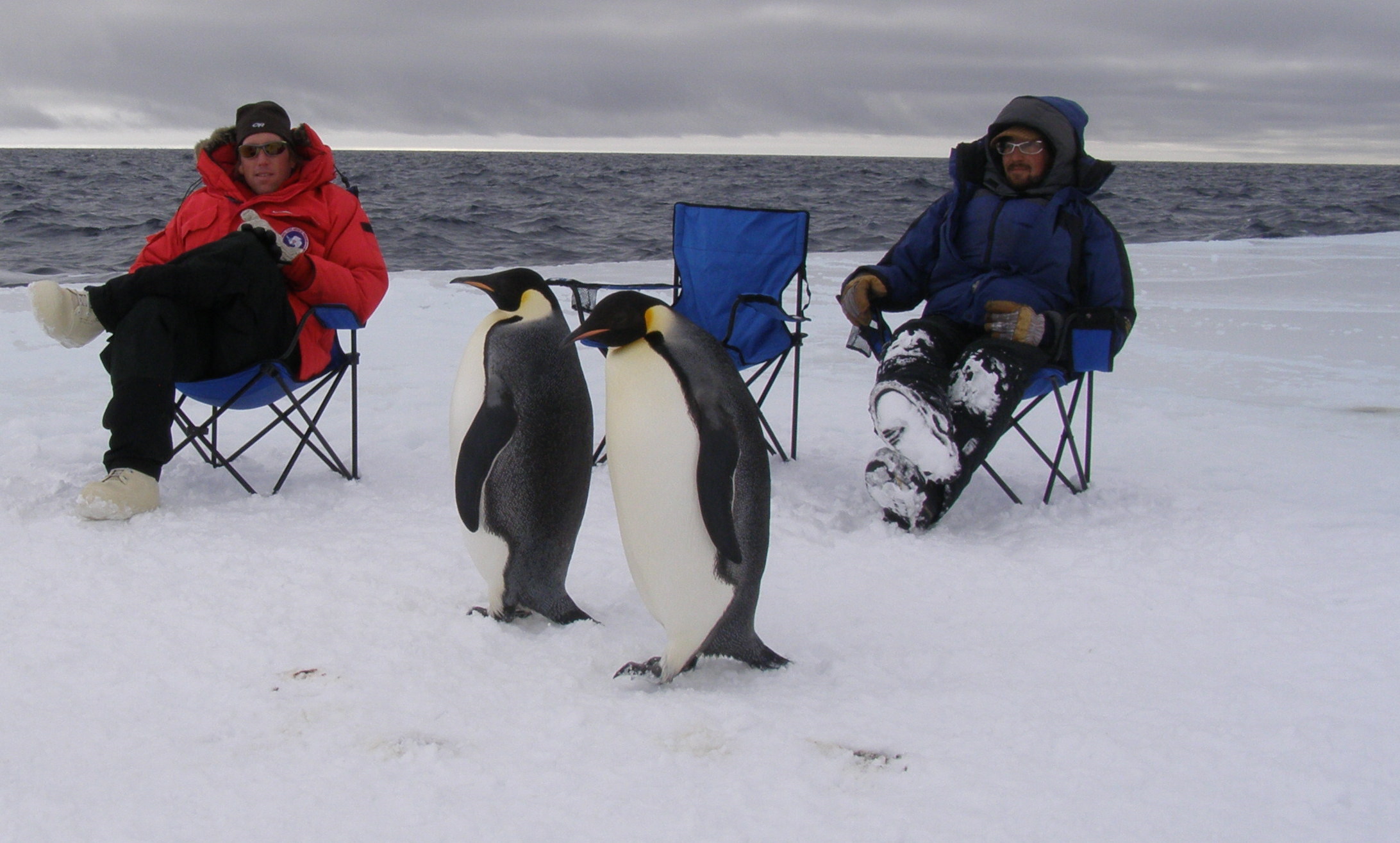
Other times they would just stand around and preen, and they were an endless source of amusement. Just as at the previous stations, we collected three separate samples of plankton. One sample is for DNA shotgun sequencing, which we will use to identify the total complement of genes present in the seawater: this can almost be thought of as the genomic potential of the system. Our second sample is mRNA, which is a the total transcriptome of the plankton: this will tell us what genes are actively being used at the time we collected the sample. We are also taking a third sample for analysis of the proteome, or the protein products of the genome.

It takes us about seven hours to filter sufficient volumes of water and harvest enough plankton for these analysis, so in the meantime we sat out on beach chairs, kept an eye to make sure our hoses and pumps didn't freeze, and watched the penguin parade. Partway through the day a large group of Adelie penguins swam over and joined the scene. Adelie penguins are significantly smaller than Emperor penguins, so when they emerge from the water, they have so much momentum they literally shoot into the air, landing on their feet before tobogganing to safety.
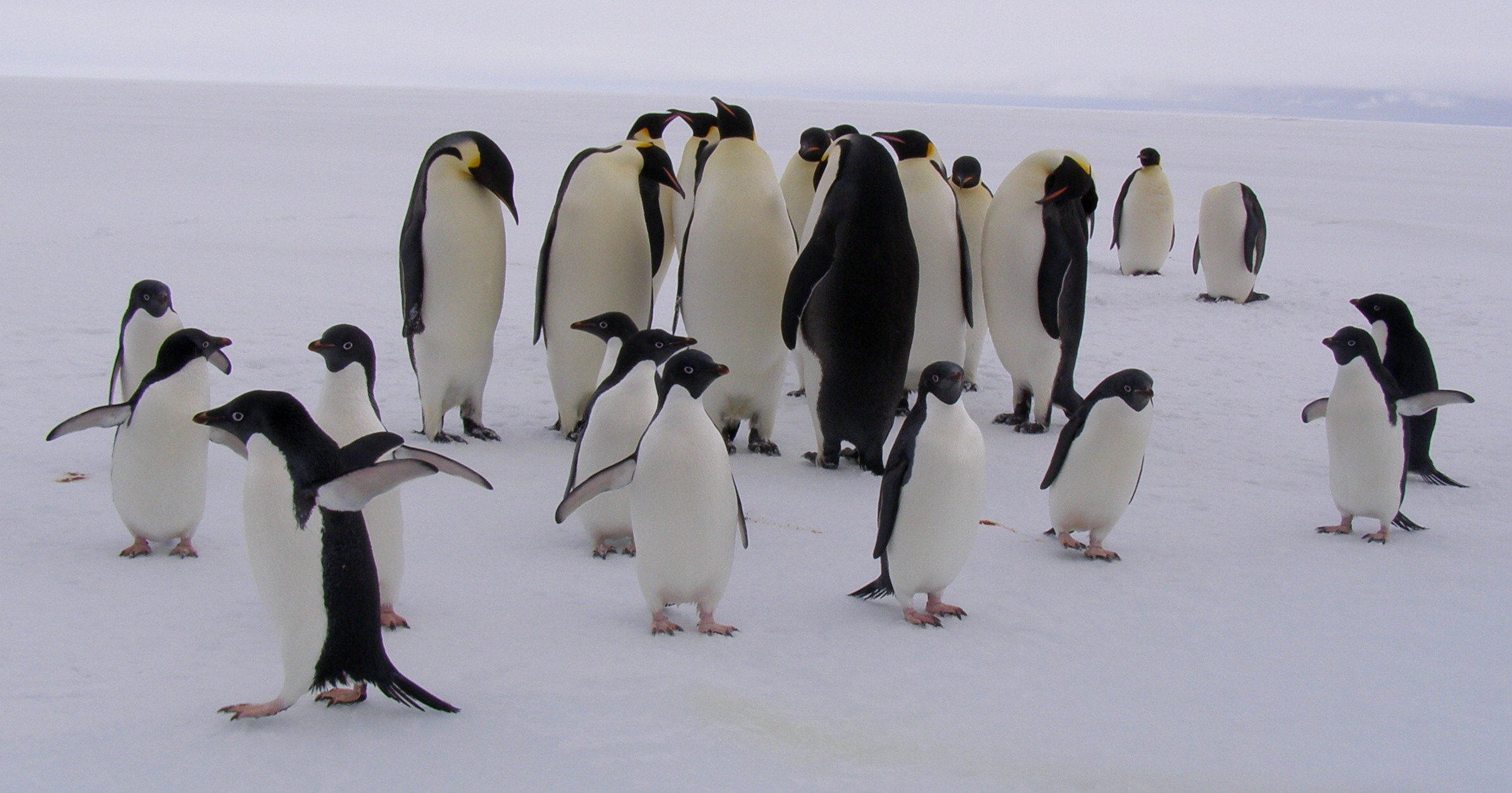
The afternoon eventually devolved into a multi-species penguin party, with the birds occasionally waddling over to our filtration racks to see what the red-jacketed aliens were doing, and otherwise just hanging out together, Adelies and Emperors. We were surprised to see this casual behavior, and there was rarely any hostility between the two species of penguins - though I think I saw an Emperor swat an Adelie out of the way once.
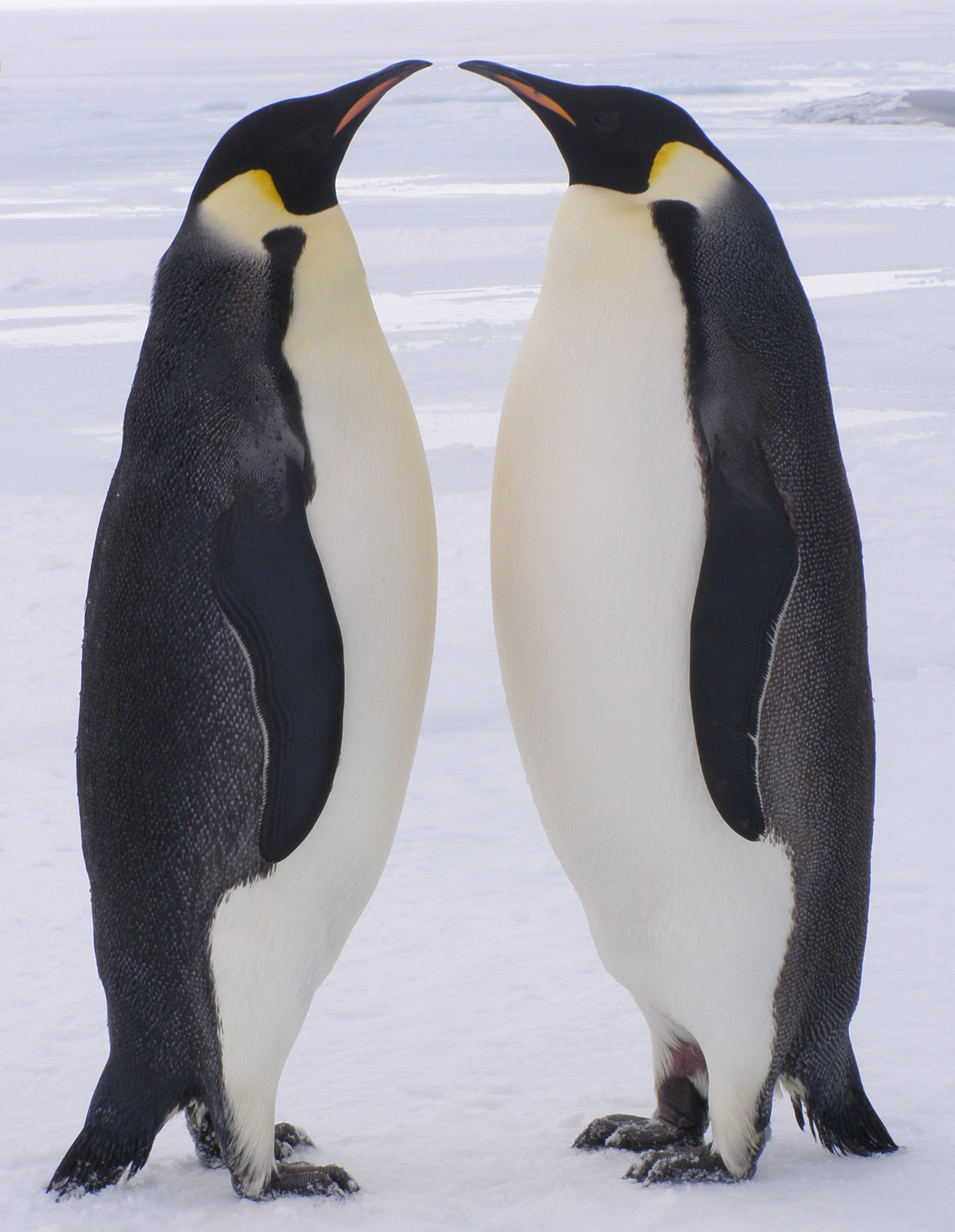
Perhaps I'm going a bit overboard with the penguins, but it was truly amazing to watch them while we went about our work, and they generated endless photogenic moments. Many of the emperor pairs were courting: the male stand directly in front of a female, head down, and then slowly raise his head while issuing his song. The female would follow the motion, until they both held heads in the air, and they would hold that posture, ostensibly sizing each other up for potential worthiness as a mate.
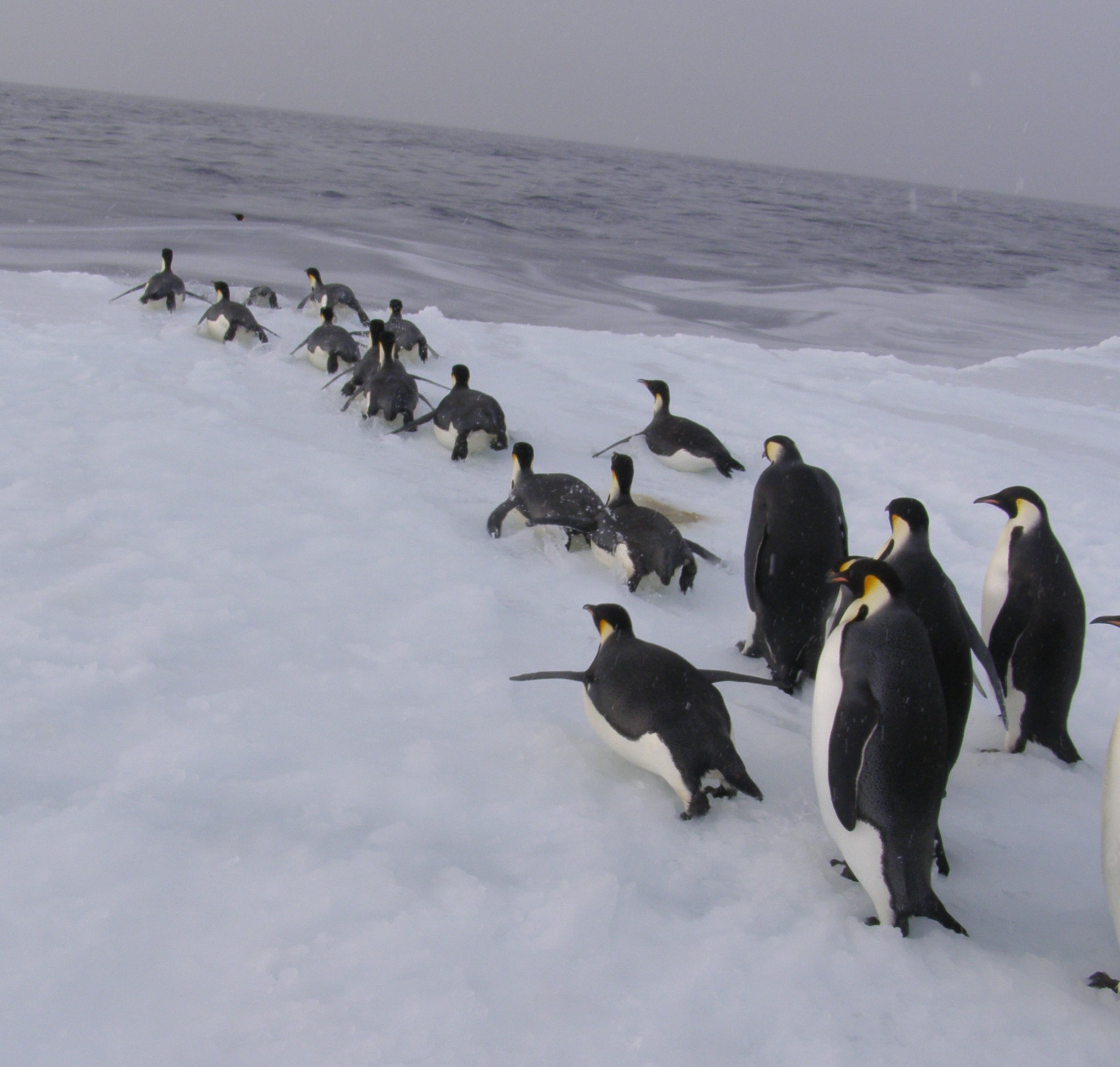
Towards evening we finished the last of our sampling, and as we began to unhook the filtration lines and hoses, the Emperor penguins sensed the show was over, and began to queue up on the ice. After they were all in an orderly line, they tobogganed back off into the ocean, leaving us to pack up our gear and take our samples back to our mobile research sled. We now had four stations in a transect, starting at land's edge and traversing out across the frozen Ross Sea to the open water at the Ross Sea Polynya. We were all tired from the effort, and looking forward to some fresh food and heated rooms back in McMurdo Station.